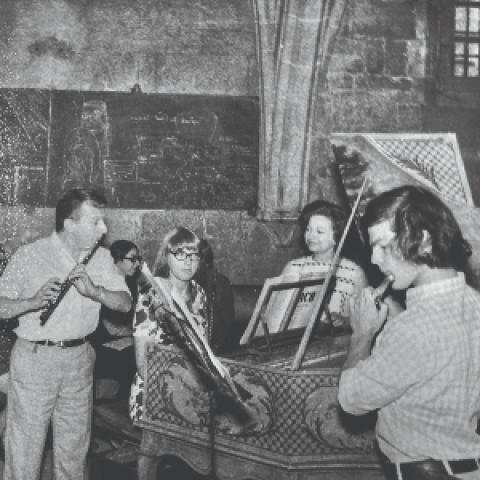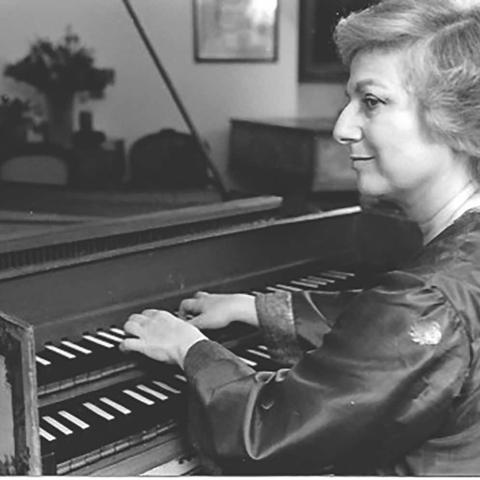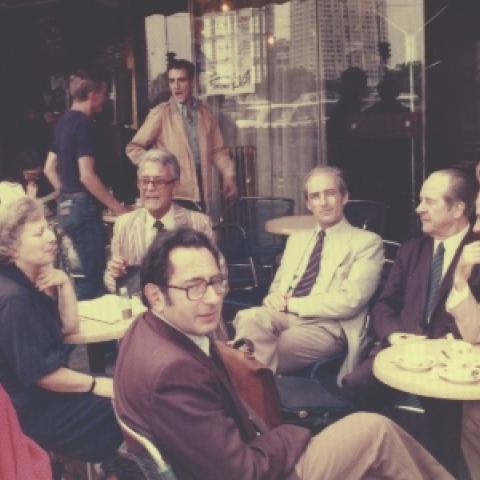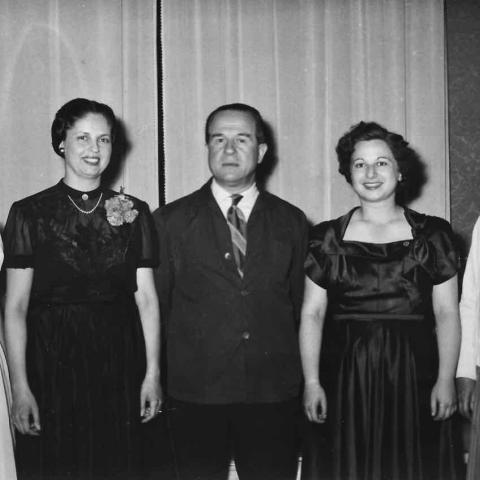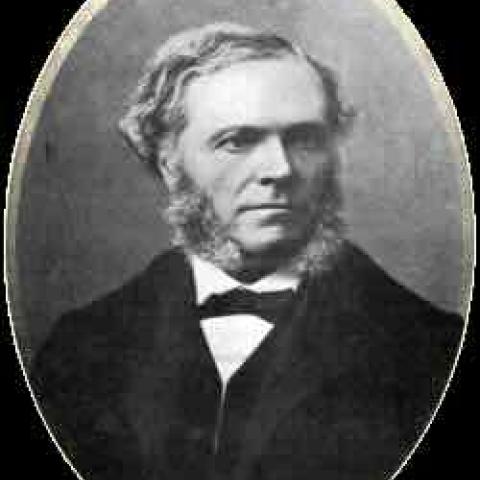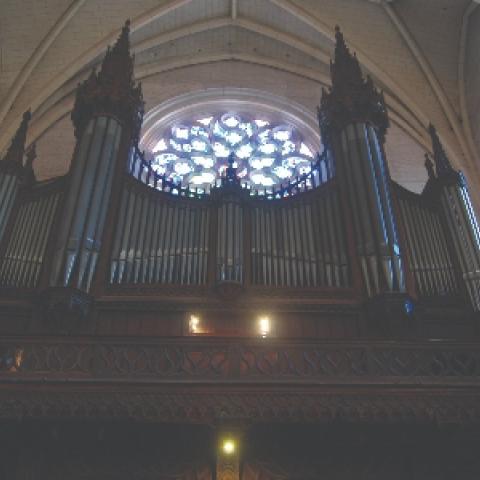Born in New York City, Sally Gordon-Mark has French and American citizenships, lives in Europe, and is an independent writer, researcher, and translator. She is also a musician: her professional life began in Hollywood as the soprano of a teenage girl group, The Murmaids, whose hit record, Popsicles & Icicles, is still played on air and sold on CDs. Eventually she worked for Warner Bros. Records, Francis Coppola, and finally Lucasfilm Ltd., in charge of public relations and promotions, before a life-changing move to Paris in 1987. There Sally played the harpsichord for the first time, thanks to American concert artist Jory Vinikour, her friend and first teacher. He recommended she study with Huguette Dreyfus, which she had the good fortune to do during the last three years before Huguette retired from the superieur regional conservatory of Rueil-Malmaison, becoming a devoted friend.
During Sally’s residence in France, she organized a dozen Baroque concerts for the historical city of Saint-Germain-en-Laye, worked as a researcher for books published by several authors and Yale University, and being trilingual, served as a translator of early music CD booklets for musicians and Warner Classic Records. She taught piano privately and also at the British School of Paris. In September 2020, she settled in Perugia, Italy, where she is studying medieval music and continues to offer her services as a translator in the world of the arts. Sally was the guest editor of the March 2023 issue of the e-magazine published by the British Harpsichord Society, Sounding Board, Number 19, devoted entirely to the memory of Huguette Dreyfus. For more information: sallygordonmark.com.

Editor’s note: Part 1 of this series appeared in the March 2023 issue of The Diapason, pages 18–20; part 2 appeared in the April 2023 issue, pages 14–19; part 3 appeared in the July 2023 issue, pages 10–15; part 4 appeared in the August 2023 issue, pages 10–14.
Et les fruits passeront la promesse des fleurs.
—François de Malherbe1
Huguette Dreyfus’s performing career started while she was still a student in 1956, skyrocketed in the 1960s, and lasted until the end of 2008. During that half-century, she gave concerts all over the world, made 117 recordings,2 and, in France alone, appeared on about 200 radio broadcasts and thirty television programs.3 Huguette received prizes, medals, and awards throughout her life in recognition of her achievements. What’s more, her reputation as an extraordinary pedagogue travelled beyond France’s borders, attracting harpsichordists, pianists, and organists from all over the world to study with her. Huguette once said in a radio interview:
For me, pedagogy is a very important part of my professional life, and I would say that in general, it is also very important for the evolution of an artist, because it prevents one from stagnating in one’s convictions. . . .4
Huguette greeted the arrival of the twenty-first century with her usual unfailing enthusiasm, intellectual curiosity, and energy. In the fall of 2000, she performed with Eduard Melkus at the Kunsthistorisches Museum in Vienna and was featured several times on French radio. In 2000 and 2002, she gave masterclasses in Budapest and at the Villecroze Academy in France, and again in 2003 and 2004 at the Conservatorio di Musica “Giuseppe Verdi” in Milan, Italy.
In a letter to a former student, Maria de Lourdes Cutolo, Huguette wrote that she was “continuing to teach, but playing less. . . . I often go out, and I lead an active life.” She mentioned that she would sit on national and international juries in 2004 and would give another concert in Vienna in March with Melkus and his ensemble, Capella Academica Wien.5 Until 2012, she continued to give interviews on French radio. On December 28, 2003, she participated in a documentary on French television, Johann Sebastian Bach: the Last Years, along with Philippe Herreweghe and other major artists.6
In the new century, CDs of her recordings continued to be released, notably reissues of Bartok’s Mikrokosmos; the historic recordings of C. P. E. Bach’s Concerto pour flûte et orchestre en ré majeur, with Jean-Pierre Rampal on flute and Pierre Boulez conducting the chamber orchestra; and with Henryk Szeryng, George Frideric Handel, 6 Violin Sonatas, Arcangelo Corelli, La Folia. The Japanese label Denon released her recordings of Bach’s Inventions and Sinfonias in 2005 and the 16 Harpsichord Transcriptions in 2006. In 2008, the CD of Konzert für Cembalo und Streicher, Schauspielmusik zu Ritter Blaubart [Concerto for Harpsichord and Strings, Playful Music for the Knight Bluebeard] by Hugo Distler came out on the Musicaphon label. Huguette had recorded the concerto in 1964 but did not play on the Bluebeard recording, which was done in 2002.7 The last reissue in her lifetime would be in 2013, Henri Dutilleux: The Centenary Edition, a compilation of remastered discs by Erato.8
In February 2006 in another letter to Maria de Lourdes Cutolo, Huguette wrote that she had been ill since the beginning of January with a severe case of infectious bronchitis.9 Illness was unusual for her, even though her schedule had always been demanding and full of voyages. Later in the year she was chosen by the Fondation Prince Louis de Polignac to present its prizes in a ceremony “under the high patronage of her very serene highness, the Princess Antoinette of Monaco.”10
In 2008 the two concerts that would bring her career to a close were personally meaningful. On May 28 Huguette performed Bach’s fifth Brandenburg Concerto with old friends Eduard Melkus conducting the Mulhouse Conservatory Chamber Orchestra and soloists Antje Lallart and Miwako Shiraï-Rey on violin and flute, respectively. This concert in her honor took place in the Saint Jean Temple in her native Alsatian city of Mulhouse, which had presented her with a municipal medal on May 25. In a local review, it was noted:
Known throughout the world, Huguette Dreyfus, the harpsichordist from Mulhouse, contributed considerably to the renaissance of early music. This Baroque festival pays tribute to her. . . . Huguette Dreyfus has only performed here twice before: the first time [as a prizewinner] of the Geneva competition, then a second time at the Temple St. Jean, in the context of a Bach festival organized 30 years ago. . . .11
Huguette’s final concert would be with her musical partner of more than fifty years, violinist Eduard Melkus. He invited her to perform with him and his ensemble in Vienna on November 27, 2008, in honor of her eightieth birthday on November 30. That summer, she had given her last masterclass
at Villecroze.
After having officially retired, Huguette accepted an invitation from Kristian Nyquist, a former student, to give a masterclass at the school where he taught, the Hochschule für Musik in Karlsruhe. Noticing that her neck seemed to bother her, he hesitated to ask her to play, but she surprised him by giving an impromptu but masterly performance for his students.12
In March 2009 Huguette participated in a major two-day conference on Wanda Landowska at the Cité de la Musique in Paris; her interview was broadcast on the radio. Introduced as “fervently admired by her students . . . luminous and profoundly human,” she was interviewed on March 5 by the event’s director, Jean-Jacques Eigeldinger. She began by speaking about her teacher, Ruggero Gerlin, who had been a student and disciple of Landowska for twenty years before the Second World War, when Landowska had to flee to the United States and he had to return to Italy. A detailed description of his style of teaching in her class at the Chigiana Academy in Siena followed. This led to a discussion of the Pleyel and Neupert harpsichords available at the time, and then to the acquisition of her own instrument, which, because of its quills, informed her touch. Huguette said that at the time the player had to accept what was available and adapt. “The truth of it is that I always liked the instruments that I was playing at the time that I knew them.” Interestingly enough, Eigeldinger gave her free rein, and she did not speak directly about Wanda Landowska at all.13
In October of that year, Huguette gave up her car, cancelling the insurance. She showed signs of having pain in her neck and back, but true to her nature, she did not complain. Those dearest to her would soon depart: her cousin Nicole on February 11, 2010, and Myriam Soumignac on September 7, 2012. She had already lost two of the teachers that had inspired her the most—Ruggero Gerlin in 1983 and Norbert Dufourcq in 1990—and her close friend and collaborator Luciano Sgrizzi in 1994.
On March 21, 2010, Huguette spoke as the guest of honor at the annual event hosted by the association of harpsichordists, Clavecins en France. That year it was held at the former location of the Paris Conservatory at 14 rue de Madrid, where many past students and colleagues, including her friends Kenneth Gilbert and Myriam Soumignac, came to pay tribute to her. In 2012, France Musique produced a two-hour comprehensive interview with Huguette in two parts, and seemingly for the first time on air, Huguette spoke about her personal life, even going back to her childhood.14
In 2013 Huguette was honored in Brazil, where she had given masterclasses during the entire month of October 1975 under the auspices of the Museum of Art in São Paulo, which had organized a unique event, the “Course-Festival of Harpsichord Interpretation.” As a result of those classes, several of her young students (Maria de Lourdes Cutolo, Ana Cecilia Tavares, and Ilton Wjuniski), who had had little opportunity to come into contact with a harpsichord before, received grants to come study with her in Paris, and they did. It is believed that her presence in Brazil and her influence inspired a surge in interest for the harpsichord in general. Harpsichordist Marcelo Fagerlande, who had witnessed the enthusiasm of the participants, created a Harpsichord Week (Semana do Cravo) when he became professor in the School of Music at the Federal University of Rio de Janeiro, and he eventually organized a tribute to Huguette. On October 30, 2013, a video conference with Huguette was arranged, since she could not make the trip to Brazil, and she was greeted by many of her former students.15
Shortly thereafter, in November, Huguette fell and fractured her skull, which resulted in her being in a coma for months. But she miraculously survived, and on November 30, 2014, Huguette returned home to be greeted on the phone by worried friends calling to wish her a happy birthday. During the following year, she recuperated slowly, seeing family and friends who came to visit. On June 7, 2015, she gave an interview, captured on video, to her old friend Rémy Stricker, a musicologist and former radio producer.16 However, the following year after a second fall, she was readmitted to the Corentin-Celton hospital in Issy-Les-Moulineaux, just south of Paris. A steady flow of friends, relatives, and students kept her company. When she stopped speaking, her silence, something that had always been unimaginable, was deeply unsettling.
The last time I saw Huguette, on May 14, 2016, a piece by Mozart was playing on her bedside radio. Small pots of roses stood under the windows. She had always loved flowers, but could have no garden, just as she had always loved animals, but could have no pets. She had no children; she had never married, but she had created a family nonetheless of her friends and students. For she did nurture many of her students, and for some of us, she was a mother. Sitting by the bed, holding her hand, my mind was unable to accept the incomprehensible fact of her absence, for she was no longer conscious of her surroundings. I had never known her to be inanimate before, so against all reason, I kept expecting her to say something or pat my hand. I wondered if her expectations and hopes had been fulfilled, if her unfailingly cheerful façade had been supported by real happiness. Her vitality that had seemed inexhaustible and indestructible was now mysteriously gone.
Huguette passed away serenely in the early morning hours of Monday, May 16, 2016. According to her wishes, a simple ceremony was held at the Père-Lachaise cemetery, where her ashes were eventually scattered in its memorial garden.
§
Huguette’s orphaned students honored her with concerts and book dedications. On May 5, 2018, Maria de Lourdes Cutolo (who had traveled from Argentina just to participate), Frank Gousset, Elisabeth Joyé, Frank Mento, Kristian Nyquist, Joël Pontet, Brice Sailly, Yasuko Uyama-Bouvard, Marie Van Rjhin, and Ilton Wjuniski performed in a memorial concert at the Rueil-Malmaison conservatory where she last taught. The auditorium was packed, despite little publicity, and latecomers had to stand in the uppermost balcony. Harpsichord makers Claude Mercier-Ythier and Marc Ducornet were in attendance: Claude mounted a display he had created out of color photocopies of all of Huguette’s LP covers, and Marc loaned his most popular concert harpsichord. Each player prefaced their performance with an anecdote about Huguette. After the concert, which ended with a moment of silence, we celebrated her memory with a reception as jolly as she would have wanted it to be. We lifted our glasses to her, wishing she were with us.
The following month, on June 18, the Conservatoire de musique, danse, et art dramatique de Mulhouse Huguette Dreyfus was inaugurated. Xavier Lallart, the director of the conservatory at the time, had nominated her as a candidate for the name, and she emerged the winner after a public municipal election. Given her love of teaching, no tribute to her could be more significant than this. According to Eduard Melkus, it was also Lallart who was behind the concert in May 2008 in Mulhouse. His wife Antje, conductor and violinist, had been old friends with Huguette, having met her through Eduard Melkus, with whom she had studied.17
In addition to her extensive discography, she left behind three publications: Mélanges François Couperin, published by A. et J. Picard et Cie of Paris in 1968; Rencontres de Villecroze (1995) François Couperin: nouveaux regards, actes des Rencontres de Villecroze, 4 au 7 Octobre 1995, sous la direction d’Huguette Dreyfus; and J. S. Bach: Goldberg-Variationen, Variations for Piano, BWV 988, Wiener Urtext Edition, Schott/Universal (UT50159), “Edited from the new Bach-Edition by Christoph Wolff. Fingering and comments on interpretation by Huguette Dreyfus.”
Beginning early in her career, many of Huguette’s recordings received France’s most prestigious prizes. She was awarded the Grand Prix du Disque de l’Académie Charles Cros18 in 1962, 1970, 1971, 1972; the Grand Prix de l’Académie du Disque français19 in 1964 and 1968; the Grand Prix des Discophiles in 1964; the Prix de l’Institut de Musicologie de l’Académie du Disque français in 1970; the Grand Prix du Président de la République from l’Académie Charles Cros in 1985; and the Prix de la Nouvelle académie du disque in 1995.20
Huguette bequeathed her papers, photographs, recorded and published music, concert programs, and posters to the Bibliothèque nationale de Paris. Her archives are located at the Richelieu site, identified as FM FONDS DRE in the catalogue. To the Musée de la Musique in the Cité de la Musique-Philharmonie de Paris, she bequeathed her harpsichord, “Le Dreyfus,” and an 1821 Broadwood fortepiano. She left her Neupert spinet to an anonymous person, and her piano was sold at auction.
In an interview with musicologist Denis Herlin,21 Huguette told him that her brother had purchased her harpsichord from an antique dealer on Rue de Rivoli in Paris, and that she went to see it there, as did Norbert Dufourcq at her request. The harpsichord, said to be a Blanchet, had been in Raymond Russell’s collection, and was auctioned in June 1956 to the Pelham Galleries. She acquired the instrument in 1958 and hired the leading technician of the time, Marcel Asseman, to do necessary repairs to render it playable, but not to restore it.
When the Musée de la Musique acquired the harpsichord, its authenticity was questioned. Rumors had been circulating for years in Paris that it was not an authentic Blanchet, but no one wanted to tell Huguette. William Dowd, in partnership with Reinhard Von Nagel from 1971 to 1985, came to her apartment sometime in 1973 to examine the harpsichord for a piece he was writing on the Blanchet workshop. Without being able to disassemble it, he noticed that the keyboards and action had been replaced. He saw evidence of an earlier restoration, which could have been done in England, possibly by Arnold Dolmetsch, or in France before Raymond Russell acquired it. But without consulting Russell’s archives in Edinburgh, the instrument’s prior history cannot be ascertained.
The museum submitted Huguette’s harpsichord to scientific tests and a minute examination before undertaking its restoration. Analysis showed that the instrument had been reconstructed in the late-nineteenth or early-twentieth century by an unknown person. Technicians often leave identifying marks in the instrument, and one was found from Marcel Asseman. The wood was determined to be from the eighteenth century, which could mean that an old harpsichord had been rebuilt. Neither the soundboard nor the decoration on the bentside are original. The rose, a harpsichord maker’s trademark, is not considered to be Blanchet’s. Therefore, it has been concluded that the instrument was not built by Blanchet or anyone in his atelier. However, because it has historical significance, having been played by Huguette and her illustrious students, it has been named after her. The harpsichord is now completely restored and available for concerts, recordings, and masterclasses, according to Huguette’s wishes.22
During her lifetime, the French government bestowed its highest awards on her, acknowledging her service to her country. There are two French national orders: the highest is the Legion of Honor, the second one is the National Order of Merit. They are very similar in their award criteria, the main difference being the minimal period of service: ten years for the National Order of Merit, twenty years for the Legion of Honor. Both of them have three ranks, Knight, Officer, and Commander; and two titles, Grand Officer and Grand Cross. Huguette was awarded the Knight of the National Order of Merit medal on June 6, 1973, then one for Officer on April 3, 1987, and then one for Commander on May 14, 2004. On December 30, 1995, she was awarded the Knight of the Legion of Honor medal, and then promoted to Officer on December 31, 2008.23 She was also honored by the Austrian government, which made her a Commandeur de l’ordre national du Mérite, and Officier des Arts et des Lettres et du Mérite de la République d’Autriche.
Aside from the recordings, instruments, and publications she left behind, Huguette’s most important legacy may have been the indelible imprint she left on the performers she taught, who in turn became teachers themselves. For example, it was she who inspired concert artist Elisabeth Joyé to take up the harpsichord:
I was 17, passionate about music, and I played the piano. My dad was the treasurer of a music festival in the south of France, and I was the official page-turner. That summer, Huguette Dreyfus had been invited to the Collégiale de Six-Fours to play all of the Bach sonatas for violin and harpsichord on the Hemsch harpsichord that belonged to Claude Mercier-Ythier. I was turning the pages and was immediately fascinated by all that Huguette was doing on that magnificent instrument as to expressivity and dynamics. I was familiar with the Neupert harpsichord as being the instrument that played bass continuo in an orchestra. I adored Bach’s music that I was playing a lot on the piano. That night, I made the decision to start playing the harpsichord. Huguette advised me to study with André Raynaud in Aix-en-Provence because I did not envisage moving to Paris at the time—I was young! The following year, no doubt thanks to my obstinacy and my passion for Bach and the harpsichord, I was accepted into Huguette’s class at the Bobigny Conservatory, where I remained for three years before leaving for the Netherlands. I remember her lively and exacting teaching. I stayed in touch with Huguette until the end of her life, and we shared a great deal of memories. We also spoke about teaching and the young generation.24
One of her colleagues, Françoise Lengellé, recalls her experience working with Huguette when they taught at the Conservatoire national supérieur de musique et de danse in Lyon, France:
The relationship between two colleagues that Huguette and I were able to have—outside of the admiration that I felt for her as an artist—was a source of permanent evolution and creativity for me. Watching and listening to her teach were always superb lessons in themselves. I was always thankful for her great culture, humor, and the epic laughs at Lyon and elsewhere that we shared. I owe her so much.25
And so do many of us, as well as the audiences to whom Huguette introduced the harpsichord and the lesser-known Baroque repertoire in the 1960s. Later, it would be twentieth-century contemporary music for harpsichord that she would help make known to the public. Although future audiences will not be able to experience her effervescence and artistry in person, the recordings she left behind for future technology to embellish and the seeds she planted in her students will ensure her enduring presence in the perennial transmission of harpsichord music from generation to generation.
Notes
1. “And the fruits will surpass the promise of the flowers.” François de Malherbe, “Prière pour le Roy Henry Le Grand allant en Limozin,” Œuvres poétiques de Malherbe, E. Flammarion (Librairie des Bibliophiles), 1897, Paris, pages 108–113.
2. Huguette Dreyfus’s complete discography, compiled by the author, dolmetsch.com/huguettedreyfusdiscography.htm.
3. INA, http://inatheque.ina.fr/docListe/TV-RADIO/.
4. Huguette Dreyfus, radio interview by Myriam Soumignac, “Portraits en musique,” June 9, 1988, France Musique. INA, op. cit.
5. “Je sors beaucoup et mène une vie active,” Huguette Dreyfus, letter to Maria de Lourdes Cutolo, December 10, 2003.
6. Les chemins de la foi: Jean Sébastien Bach, les dernières années. France 2. INA,
op. cit.
7. Robert Tifft, email to the author, June 13, 2023.
8. Huguette Dreyfus’s complete discography, compiled by author, op. cit.
9. Huguette Dreyfus, letter to Maria de Lourdes Cutolo, February 3, 2006.
10. Correspondance D, E, F. BnF VM FONDS 145 DRE-1 (3).
11. Coupures de presse, BnF VM FONDS 145 DRE 5 (4).
12. Kristian Nyquist, interview with author, March 5, 2022, Karlsruhe, Germany.
13. Huguette Dreyfus, interviewed by Jean-Jacques Eigeldinger, March 5, 2009. “Wanda Landowska et la renaissance de la musique ancienne,” March 4–5, 2009, Cité de la Musique, Paris, France.
14. Marcel Quillévéré’s radio interviews of Huguette Dreyfus, “Les traversées du temps,” France Musique. March 7, 2012 (part 1) and March 8, 2012 (part 2).
15. Marcelo Fagerlande, phone interview by author, October 21, 2022. Also see Sounding Board, number 19, page 33. 16. “L’Entretien d’Huguette Dreyfus et Rémy Stricker sur Roland-Manuel,” June, 2015. youtube.com/watch?v=NQ_NjzI_cV0. The film was produced by Les Amis de Maurice Ravel, boleravel.fr, and directed by Gérard Guilloury, gerardguilloury.com.
17. Xavier and Antje Lallart, interviews by phone, email, and in person from July 15 through November 2022.
18. Charles Cros (1842–1888), an important poet, scientist, and inventor who experimented in the reproduction of sound.
19. The Académie du disque français was founded in 1951 by Jean Cocteau, Colette, Arthur Honegger, the poet Guy-Charles Cros (the son of Charles Cros), and Michel de Bry. In 1964 Georges Auric and Darius Milhaud were co-presidents of the academy.
20. Huguette Dreyfus’s complete discography, compiled by author, op. cit.; Biographie Huguette Dreyfus, https://www.whoswho.fr/decede/biographie-huguette-dreyfus_23542.
21. Denis Herlin, Sounding Board, number 19, page 35, March 2023.
22. Jean-Claude Battault, interview with author, March 9, 2022, Cité de la Musique, Paris, France. For more information on the instrument, see “Guillaume Finaz and ‘Le Dreyfus,’ ” Sounding Board, number 18, page 33, May 2022.
23. Alice Bouteille, director of communication, Cabinet du grand chancelier, Paris, France. Email to author, February 1, 2023. Translated from French by the author.
24. Elisabeth Joyé, email to author, April 1, 2023. Translated from French by the author.
25. Françoise Lengellé, email to author, April 11, 2023. Translated from French by the author.
Acknowledgments
After Huguette passed away in 2016, the first person I interviewed was our mutual friend, Claude Mercier-Ythier. He was eager to help me with my project to document Huguette’s life, giving me information and photographs. We made plans to collaborate on her discography, based on the accounts he painstakingly kept of her recordings. Since then, I was fortunate to meet six other contemporaries of Huguette: Eduard Melkus, Zuzana Ružicková, Anne-Marie Becksteiner Paillard, Paul Kuentz, Jill Severs, and Marie-Claire Jamet, who graciously welcomed me and shared their memories. Some gave me videos, recordings, and photographs of Huguette. Sadly, Claude, Zuzana, and Anne-Marie have since passed away.
However, the first person I must thank is Huguette herself. For many of her students, she was a midwife, a catalyst. She revealed me to myself, and I switched tracks, moving in a different direction towards a life that better suited my true nature. She showed me that I could perform the music I loved if I worked in a more efficient way and focused my attention only on the piece as I played. “The only thing that’s important is the music,” she once told me. In 2000 Huguette wrote the recommendation letter required for me to obtain a research pass at the Bibliothèque nationale de Paris, and I discovered another life-changing passion.
With gratitude for their assistance and/or participation in articles I have written on Huguette for both The Diapason and Sounding Board, I thank Judith Andreyev, Andrew Appel, Jean-Claude Battault, Olivier Baumont, Christine Bayle, the late Anne-Marie Beckensteiner-Paillard, Nanon Bertrand, Dr. Brian Blood (Dolmetsch Foundation), Alice Bouteille (Cabinet du grand chancelier), the Conservatoire Emmanuel Chabrier de Clermont-Ferrand, Jocelyne Cuiller, Maria de Lourdes Cutolo, Laurence Decobert (Bibliothèque nationale de France), Renaud Digonnet, Matthew Dirst, Françoise Dreyfus, Marc Ducornet, Mahan Esfahani, Marcelo Fagerlande, Guillaume Finaz, Catherine Findlayson, Elisabeth Giuliani, Katarina Glachant, Stuart Gordon (who restored many otherwise unusable images), François-Pierre Goy, Yannick Guillou, Ellen Haskel-Maserati, Denis Herlin, Marie-Claire Jamet, Elisabeth Joyé, Niamh Kenny (l’Académie musicale de Villecroze), Mark Kroll, Paul Kuentz, Chiaopin Kuo, Laetitia Faetibolt (City of Mulhouse, France), Antje and Xavier Lallart, Susan Landale, Véronique LeGuen, Yohann Le Tallec (Bibliothèque nationale de France), Françoise Lengellé, Edna Lewis, Jean-Rémy Macchia, Eduard Melkus, Frank Mento, the late Claude Mercier-Ythier, Laure Morabito, Marie-Claire Moreau-Mangin, Novine Movarekhi, Pamela Nash, Jenny Nex (The University of Edinburgh), David Noël-Hudson, Kristian Nyquist, Shigeru Oikawa, Larry Palmer, Olivier Papillon, Miriam Pizzi (Accademia Musicale Chigiana), Mario Raskin, André Raynaud, Julie Reid (archivist, Centre du patrimoine), Jean-Paul Rey, Marie Van Rhijn, Lionel Rogg, Salvo Romeo, Christophe Rousset, Alan Rubin, the late Zuzana Ružicková, Pascal Scheuir, Lucile Schirr (Archives, Strasbourg, France), Didier Schnorhk (formerly with the Concours de Genève), Jill Severs, Miwako Shiraï-Rey, Richard Siegel, Laurent Soumignac, Ana Cecilia Tavares, Pascal Teixeira da Silva, Mariko Terashi, Robert Tifft, Catherine Vallet-Collot (Bibliothèque nationale de France), Reinhard von Nagel, Yasuko Uyama-Bouvard, Kamila Valkova Valenta, Jory Vinikour, Daniel Wagschal, Olivia Wahnon de Oliveira (librarian of the Royal Conservatory of Brussels), Peter Watchorn, Jed Wentz, John Whitelaw, Laura Widolf (Conservatoire Huguette Dreyfus), Ilton Wjuniski, and Aline Zylberajch-Gester.
I am especially indebted to Françoise Dreyfus and François-Pierre Goy for their involvement, support, and assistance, without which these articles could never have been written. Special thanks go to Pamela Nash, Robert Tifft, and Jed Wentz for reading my drafts and making important observations. I am very fortunate to have benefited from their good natures, knowledge, and expertise. For their constant encouragement for me to write over the years, my heartfelt thanks go to Selina Hastings, Stuart Gordon, and Richard Hieronymus.

